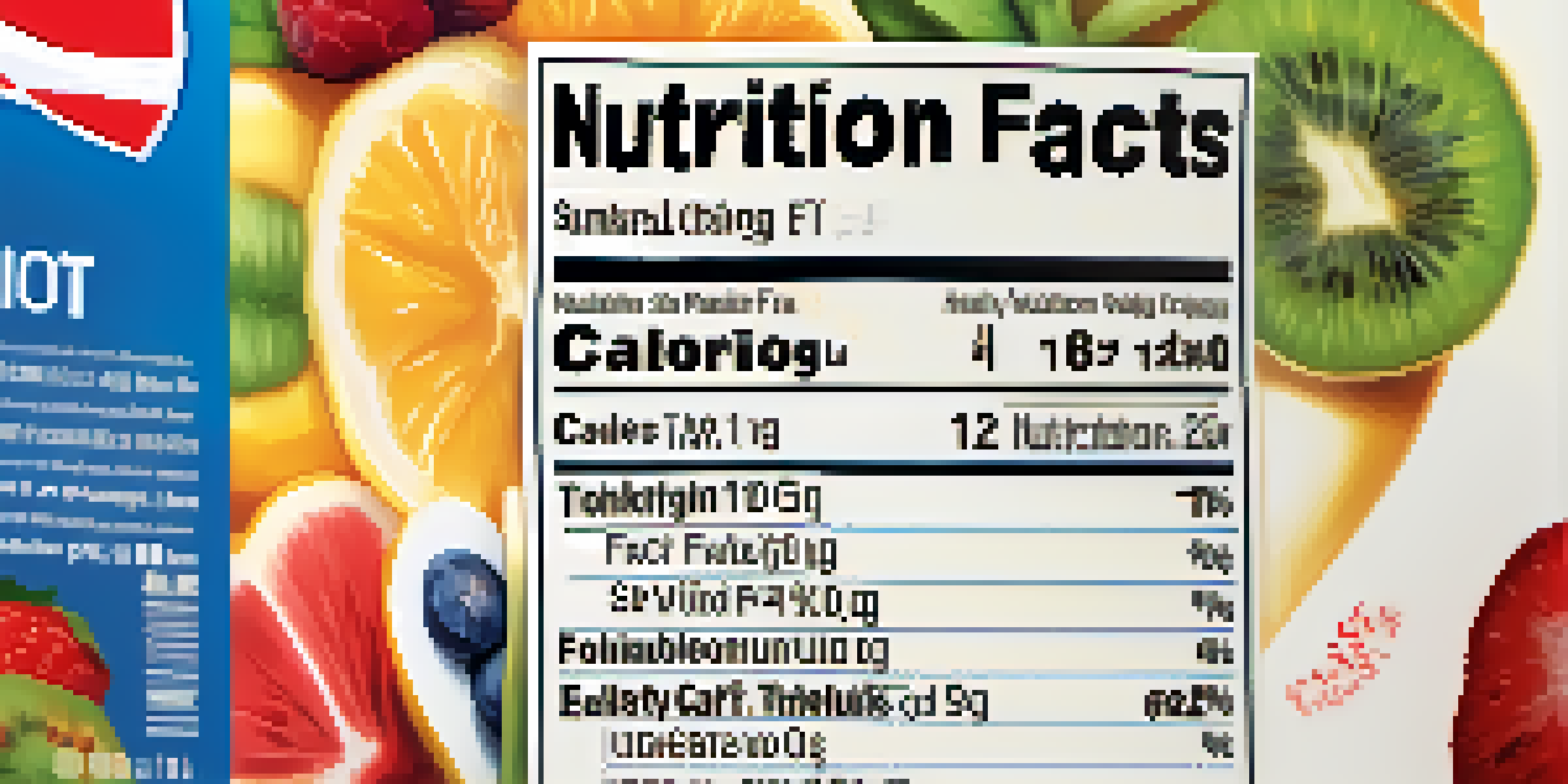Understanding Food Labels: Making Informed Healthy Choices

What Are Food Labels and Why Do They Matter?
Food labels are the informative tags found on packaging that guide consumers in making healthy choices. They provide essential details about the nutritional value, ingredients, and serving sizes of the products we buy. Understanding these labels is crucial for promoting a healthier diet and managing specific dietary needs, such as allergies or weight control.
You are what you eat, so don’t be fast, cheap, easy, or fake.
When you look at a food label, it’s like having a conversation with the food itself—telling you what’s inside and how it can affect your health. For instance, if you’re trying to cut back on sugar, the label can help you identify which products are loaded with it and which ones are more balanced. It’s your starting point for making informed choices at the grocery store.
Moreover, food labels can empower you to take control of your health. By learning to interpret labels correctly, you can avoid misleading claims and choose products that align with your dietary goals. This knowledge can lead to better health outcomes and a more satisfying eating experience.
Decoding the Nutrition Facts Label
The Nutrition Facts label is a standardized panel that provides a breakdown of the nutritional content of a food item. At a glance, you can see key information such as calories, fats, carbohydrates, and protein. This section is particularly useful for monitoring your daily intake and ensuring you meet your nutritional needs.

One important aspect of the Nutrition Facts label is the serving size, which indicates how much of the product is considered one serving. It’s essential to pay attention to this, as many people underestimate how much they're actually consuming. For example, a bag of chips might seem small, but if the serving size is only 10 chips, you could easily exceed your calorie limit without realizing it.
Understanding Food Labels Matters
Food labels provide essential information about nutritional value and ingredients, helping consumers make informed dietary choices.
Understanding the percentages next to each nutrient helps you gauge how a food item fits into your daily diet. These percentages are based on a 2,000-calorie diet, which can serve as a guideline for most adults. However, depending on your specific health goals, you might need to adjust your focus accordingly.
Ingredient Lists: What to Look For
Ingredient lists reveal the components that make up a food product, listed in descending order by weight. This means that the first few ingredients are the most significant contributors to the product’s overall composition. If you see sugar or unhealthy fats listed at the top, it’s a red flag that the product may not be the healthiest choice.
The food you eat can be either the safest and most powerful form of medicine or the slowest form of poison.
Moreover, ingredient lists can help you avoid allergens or substances you wish to limit, such as artificial preservatives or high fructose corn syrup. For instance, if you’re sensitive to gluten, scanning the ingredient list can quickly show if it contains wheat or other gluten-related ingredients. This proactive approach helps you maintain a healthier diet tailored to your needs.
Also, look for recognizable ingredients! If you see a long list of complicated chemical names, it might indicate that the product is overly processed. Instead, opt for products with fewer, more natural ingredients, which can be a good sign of a healthier option.
Understanding Health Claims on Packaging
Food packaging often features health claims, such as 'low fat' or 'high in fiber,' which can be enticing. However, it’s crucial to approach these claims with a discerning eye. Many products can be labeled as healthy based on specific criteria, yet still contain other less desirable ingredients.
For example, a cereal might boast being 'sugar-free,' but could be loaded with artificial sweeteners, which may not be beneficial for your health either. It’s essential to cross-reference health claims with the actual nutrition facts and ingredient lists to get the full picture. Remember, just because a product claims to be healthy doesn’t mean it’s the best choice for you.
Decoding Nutrition Facts is Key
The Nutrition Facts label breaks down calories and nutrients, allowing individuals to monitor their daily intake effectively.
Being aware of marketing tactics can help you avoid being misled. Sometimes, companies use buzzwords to draw attention while the product may not be as healthy as it seems. Always take a moment to read beyond the label and make sure it aligns with your health goals.
The Importance of Serving Sizes
Serving sizes are a fundamental part of food labels that illustrate how much you should consume in one sitting. However, it’s not just about portion control; it’s also about understanding how the nutrition information relates to your actual intake. For instance, if the serving size is one cup, but you typically eat two, you’ll need to double the nutritional values listed.
It’s also worth noting that serving sizes can vary significantly between products. A small bag of popcorn might have a serving size of two cups, while a granola bar may only list one bar. This discrepancy can lead to unintentional overeating if you’re not aware of how much you’re actually consuming.
By keeping an eye on serving sizes, you can better manage your calorie intake and make more mindful eating decisions. This practice not only supports weight management but also contributes to overall health by ensuring you’re not overindulging in certain nutrients.
Tips for Making Healthier Choices
When shopping, it’s helpful to create a mental checklist of what to look for on food labels. Prioritize products that are high in fiber, low in added sugars, and contain healthy fats. This approach can steer you towards options that nourish your body and maintain your energy levels throughout the day.
Another tip is to compare similar products side by side. For instance, when choosing between two brands of yogurt, look at the sugar content, protein levels, and ingredients. This simple practice can reveal surprising differences that influence your choice and ultimately your health.
Mindful Eating Enhances Health
Practicing mindful eating by examining food labels can lead to healthier choices and a more satisfying eating experience.
Lastly, don’t hesitate to ask questions! If you’re uncertain about a product, many brands have customer service lines or websites where you can find more information. Engaging with the brands you consume can empower you to make informed decisions about what you put on your plate.
Practicing Mindful Eating with Food Labels
Mindful eating is all about being present and conscious of what you consume. By closely examining food labels, you can better appreciate the nutritional value of your meals. This practice encourages you to savor your food and recognize how it affects your body, leading to healthier eating habits overall.
Incorporating mindfulness into your grocery shopping can also make a significant difference. Instead of rushing through the aisles, take your time to read labels and understand what you’re buying. This shift in mindset can transform shopping from a chore into an opportunity for learning and growth.

Ultimately, being more mindful about food labels can lead to a more fulfilling eating experience. When you know what goes into your meals, you’re more likely to make choices that nourish your body and support your well-being, turning your meals into a celebration of health.